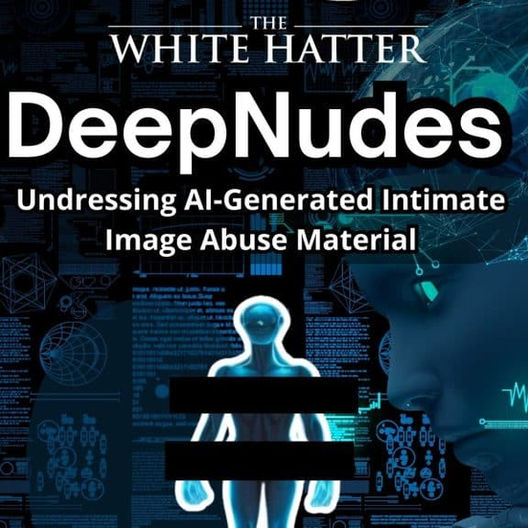Trending AI Nostalgia Video Being Used To Support A Narrative: A Teachable Moment
- The White Hatter

- Aug 24
- 4 min read

Recently, AI generated nostalgia videos are appearing on some online platforms and circulating widely online. These videos are styled to look like a sentimental snapshot of the 1980s and 1990s, complete with youthful voices, smiling teens, big hair, and carefully staged “memories.”(1)(2) Many advocates who encourage postponing youth and teen access to social media and technology (especially artificial intelligence), have been reposting these videos with enthusiasm accompanied by comments like, “This is great”. Why?, because in their own words it reflects the memories and experiences of their youth.
At first glance, these videos may seem harmless, even charming. However, there are several important teaching points for parents and caregivers to consider:
1. It Isn’t Real
These videos are not filmed with real people, they were created entirely by artificial intelligence. What looks like authentic footage of teens and young adults from the past, the hairstyles, the voices, the polished nostalgia, was generated by feeding prompts into AI image and voice generator. In industry slang, this kind of manufactured content is sometimes called “AI slop.” A more neutral term is synthetic AI media. Whatever the label, the reality is the same, these are not genuine memories, but carefully fabricated visual illusions.
2. Built In Bias
If you watch closely, every teen or young adult in these videos are white and middle class. This lack of diversity reflects a well documented problem in AI. These systems replicate the biases embedded in their training data, which often overrepresent certain groups while excluding others. Research has shown that image generating AI frequently defaults to whiteness or stereotypical imagery unless carefully guided otherwise. (3)(4) When nostalgia is filtered through biased AI, entire communities are erased, and history can be distorted.
3. A Contradiction in the Delay Movement
This is where things get complicated. Some prominent voices in the “delay” movement, who often warn about the risks of AI and social media, are now circulating these AI generated videos to advance their message saying “this is great.” On one advocate’s social feed, where this video was posted, a follower pointed out the contradiction directly, “I love your work, but this is the AI vision of that time. It’s the very thing we are pushing against.”
The lesson is not about pointing fingers at individuals but highlighting the importance of consistency. If we caution against AI because of its risks, we should apply that same caution when AI outputs align with our own preferred narratives.
4. Nostalgia Sells
The companies and individuals that appears to be behind these videos, profits by selling products tied to warm memories of the past. Nostalgia has always been a powerful marketing tool. (5) Entire industries, from classic car ads to political campaigns, use it to trigger emotion. When nostalgia is paired with AI or linked to a political or cultural agenda, it becomes even more persuasive because it can fabricate “memories” that never actually happened. Parents and caregivers should be alert to how easily this emotional pull can be manipulated into suggestibility.
5. Were the 1980s Really Better for Youth and Teens?
These videos also raises a bigger question, “Were the 1980s and 1990s truly better for youth, or are we simply romanticizing the past?” Earlier this year, we published an article challenging this very narrative. Every generation has faced serious challenges, such as bullying, exclusion, and harmful influences, long before smartphones or social media existed (6). Selective memory, now amplified by AI, risks painting an overly rosy picture of the past while editing out the significant struggles and challenges that were also present back in “the good old days”. We would encourage our followers to read our past article.
So why does this matters for parents and caregivers? The viral videos that inspired this article, now circulating in some parent groups, serves as a reminder of three important lessons for families
AI content is not always what it seems. Encourage youth and teens to question the authenticity of what they see online. A simple question like, “How do you know this is real?” can spark critical thinking.
Bias matters. When entire groups are erased from digital media, it reflects deeper issues in the tools and data being used. Talking with youth and teens about representation helps them see why inclusion is important.
Nostalgia can mislead. It’s tempting to believe “things were better back then,” but youth and teen challenges did not begin with technology, and they will not disappear by simply delaying it.
AI generated nostalgia videos may look and feel heartwarming, but they blur the line between truth and fiction. While the past may feel comforting, it’s often remembered selectively. As parents and caregivers, our role is not to chase an idealized vision of “better times,” but to equip our youth and teens with the critical thinking and digital literacy skills they need to question authenticity, recognize bias, and navigate both the present and the future with agency and intention.
Digital Food For Thought
The White Hatter
Facts Not Fear, Facts Not Emotions, Enlighten Not Frighten, Know Tech Not No Tech
References:














